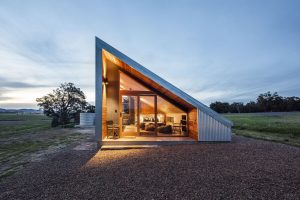MLS®#40594366 | $1,050,000
| Incredibly well-maintained bungalow in a serene country setting, on a beautifully landscaped 1.38-acre lot, with a 32’x 40’ insulated/heated shop you won’t want to miss!!! This well-maintained family home has 2,824 sq. ft. of finished living space. The open-concept main level features a spacious kitchen with an island, seamlessly flowing into the dining and living areas, creating a welcoming and airy atmosphere. The primary bedroom offers a walk-in closet and a private 3pc ensuite, while 2 additional bedrooms and a 4pc bathroom provide ample space for family or guests. The fully finished basement includes a walk-up to the attached 20' x 20’ garage, a large family room, an office, a cold room, storage space, and a convenient laundry room with a chute from the upper level. An additional bedroom and a 2pc bathroom with a rough-in for a shower complete this versatile space. Modern amenities include a sediment filter, sump pump, generator panel, forced air propane furnace, owned hot water tank, wood stove, an air exchanger. For those with a mobile business or looking for an excellent man cave, the property features a detached, insulated, & propane-heated 32’ x 40’ shop. The outdoor area is an oasis with a front covered patio, concrete pathways, an outdoor stone patio, and more than ample parking for trailers and vehicles. Situated just a 15-minute drive from Durham and 30 minutes from Owen Sound, this home offers the perfect blend of rural tranquility and convenient access to amenities. Located in West Grey, a region renowned for its stunning conservation areas, tall pines, meandering rivers, and pristine lakes, this property provides an ideal backdrop for raising a family and satisfying the spirit of exploration. Don’t miss the opportunity to own this exquisite home. Schedule your viewing today and experience the best of country living! |
522202 Concession 12 NDR - Video Tour
DETAILS
EXTERIOR INFORMATION
Lot Size 1.38 Acres
Water Drilled Well
Septic Septic
Parking Spaces 15
Architectural Style Bungalow
INTERIOR INFORMATION
Bedroom 4
Bathrooms 2.5
Square Footage 2,824 (Total Finished)
Heating & Cooling Forced Air Propane
Basement Full Basement, Fully Finished
SCHOOLS IN WEST GREY
ELEMENTARY SCHOOLS
Holland-Chatsworth Central School: This school offers a comprehensive educational program and is part of the Bluewater District School Board. It focuses on inclusive education and community involvement, providing a range of extracurricular activities and learning experiences for students
Sullivan Community School: Located on Grey Road 40, Sullivan Community School serves students from early childhood education through junior secondary levels. It is also under the Bluewater District School Board and emphasizes a supportive and engaging learning environment
SECONDARY SCHOOLS
John Diefenbaker Senior School) - John Diefenbaker Senior School, located in Hanover, Ontario, is a secondary school under the Bluewater District School Board. It serves students from grades 9 to 12, offering a wide range of academic courses
SCHOOL BOARDS
Bluewater District School Board - Oversees many of the public schools in the area and provides resources and support for students and families.
Bruce-Grey Catholic District School Board - Manages the Catholic schools in the region, focusing on faith-based education and community involvement.








